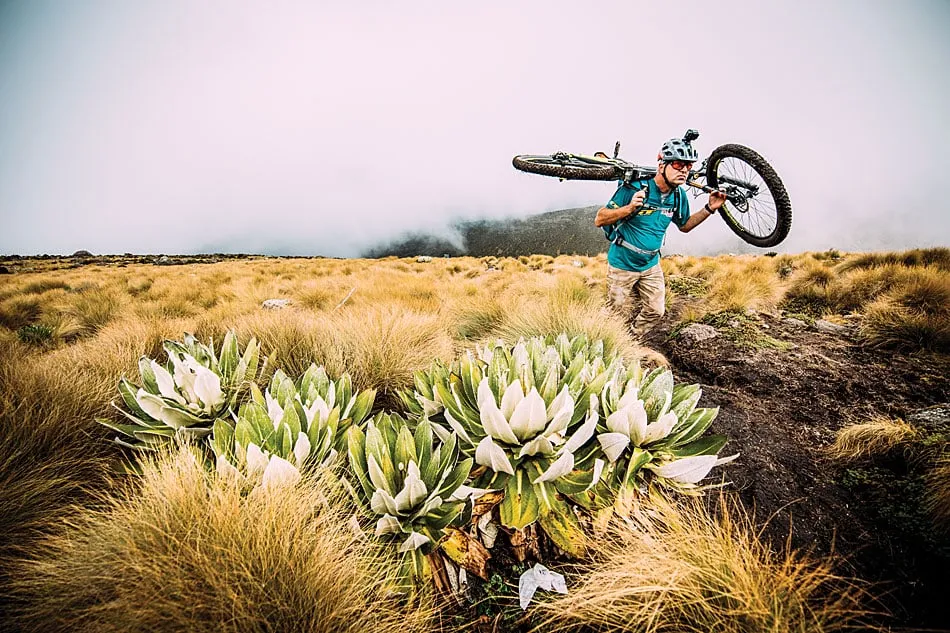5 Day Kilema Route – Kilimanjaro Climb Package
The 5 day Kilema Route is the only cycling route on Mount Kilimanjaro, perfect for adventure seekers who want to combine mountain biking with a unique climbing experience. Starting at Kilema Gate, this route allows you to ride through the lush rainforest and moorland zones, with sections of biking and hiking as you ascend toward the summit. It’s ideal for fit and experienced mountain bikers who also have a sense of adventure for high-altitude trekking.
This route offers a mix of pedal power and footwork, with overnight stays at designated campsites. While success rates are high for fit and acclimatized riders, the altitude and steep terrain still make it a challenging ascent. The Kilema Route provides an exciting alternative to traditional trekking routes and is a great choice for those looking for something different on Kilimanjaro.

At a Glance
Duration: 5 Days on the mountain
Route Type: Cycling & trekking (camping accommodation)
Start Point: Kilema Gate
- End Point: Kilema Gate
Difficulty: Strenuous
Scenery: Rainforest, moorlands, alpine desert, and glacier views
Best For: Experienced cyclists, adventure seekers, and those wanting a unique climb
Detailed Itinerary – 5 Day Kilema Route
Day 1: Kilema Gate to Kilema Camp
After registration at Kilema Gate (1,950m), you’ll start cycling through the lush rainforest on a dirt track. The ride takes you up gentle to moderate gradients, with the chance to spot wildlife such as colobus monkeys. Reach Kilema Camp (2,700m) for your first overnight.
Day 2: Kilema Camp to Horombo Hut
Continue cycling on mixed terrain through the moorland zone, with incredible views of Mawenzi Peak. You may need to push your bike over steeper, rocky sections. Arrive at Horombo Hut (3,720m) where you’ll camp nearby.
Day 3: Horombo Hut to Kibo Hut
Today’s route moves into the alpine desert, where cycling is partly possible but trekking is required in certain areas due to steep gradients and loose terrain. Arrive at Kibo Hut (4,703m) and prepare for your summit push.
Day 4: Summit Day – Kibo Hut to Uhuru Peak, then descend to Horombo Hut
You’ll start trekking just after midnight toward Gilman’s Point, then continue to Uhuru Peak (5,895m), the highest point in Africa. Enjoy the sunrise and take photos before descending back to Kibo for breakfast, then cycling/hiking down to Horombo Hut.
Day 5: Horombo Hut to Kilema Gate
Descend by bike through the moorland and rainforest to Kilema Gate. Collect your summit certificate and transfer back to your hotel.
What's Included
All Kilimanjaro National Park entry fees
Professional mountain guides, porters, and bike handlers
Camping accommodations during the climb
All meals on the mountain
Drinking water and hot drinks
Rescue fees
Oxygen cylinder and first-aid kit
Pre- and post-trek briefing
Transportation to and from Kilema Gate
Summit certificate (gold for Uhuru)
What's Not Included
Flights and visas
Travel insurance
Tips for guides and porters
Personal trekking/cycling gear (bikes, helmets, sleeping bags, boots, etc.)
Accommodation before and after the trek (can be added on request)
Extra snacks and beverages
Portable toilets (available at extra cost)
